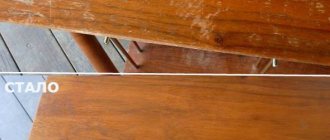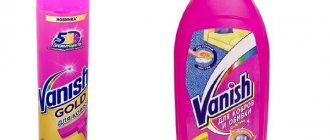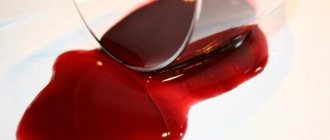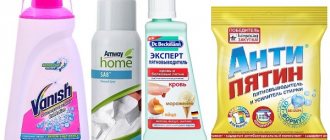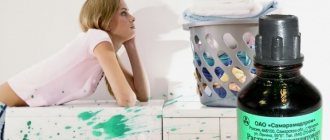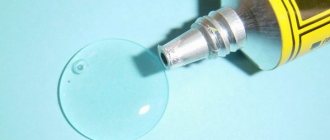How to remove blood from sheets and underwear is a sensitive and pressing question for every girl and woman. Any of us sooner or later encounters pollution during menstrual periods. Getting rid of menstrual marks is more difficult than getting rid of similar ones after cuts and wounds. After all, this is not just blood, but a mixture of enzymes, mucus and secretions, which is why it does not clot.
How to remove blood stains in specific cases
We have done a general overview of removing bloody marks on fabric, it’s time to consider other options, because life is full of surprises, but we will be ready for them!
Denim items
You can use all the recommendations described above, but since denim is a thick fabric, you need to add a few things.
You should first soak the jeans for half an hour in cold water with the addition of liquid dishwashing detergent.
Then a microfiber cloth or sponge is used. Apply the cleanser with it and leave it on the stain for 15-25 minutes. Remove traces of blood with the same napkin, moistening it in water and applying it to the stain. Cleaning products for jeans include a mixture of baking soda, salt and starch, peroxide, and if the fabric is light, soda, heated glycerin and ammonia.
Ammonia is applied with a spray bottle and cleaning begins 5-10 minutes after application.
The process will probably have to be repeated many times.
After all the manipulations, the jeans are thoroughly rinsed in cold water and sent to the washing machine.
White fabric
White fabrics are more capricious than colored ones. A trail of blood may remain a rusty reminder forever. Who would like to sleep on such bedding or wear clothes with such “decoration”? Soda will help in the fight for whiteness. Take 25-30 g of baking soda and 2 glasses of cold water.
Soak the dirty area in the solution for half an hour
After soaking, use laundry soap or antipyatin. We treat the stain with it and put the item in the washing machine.
When working with white fabrics, it is recommended to use oxygen-containing bleaches.
Sofa upholstery
To remove blood stains from sofa upholstery, two points are taken into account: the type of upholstery and the type of stain remover.
Effective in the “anti-blood” business Antipyatnin, Dr. Beckmann, Amway SA8 SOLUTIONS (spray), Unimax Ultra
But besides these means, there are several more options to return the sofa to its former appearance. Let's consider the available methods.
When cleaning upholstery, any product is first applied to a damp sponge or cloth, and only then directed to the dirty surface. All cleaning movements are carried out only in the direction of the fibers of the material, and the stain is treated from the edge to the center.
If the upholstery is made of fabric, then 72% laundry soap will do, but you can remove dirt with regular aspirin. The tablet is dissolved in a glass of lukewarm water and the stain is treated.
If there is a baking powder in the house, which in itself perfectly breaks down protein compounds, then it is also used. It is enough to dilute 1 tablespoon of baking powder in 2 tablespoons of water. This paste should be applied to the stain for an hour, and then removed with a cloth and cold water.
Ammonia and borax are excellent at removing blood from fabric upholstery. You need to pour a glass of water and 1 teaspoon of ammonia into one basin, and take a teaspoon of borax into a glass of water in another.
The treatment is done one by one, first with ammonia, then with borax solution
If the upholstery is made of artificial leather, then the treatment is done with whipped foam from a solution of a glass of cold water, ammonia and dishwashing detergent. Clean the stain with an old toothbrush.
Leather upholstery will be cleaned of old blood stains again if you take 1 part lemon juice and the same amount of cream of tartar. Everything is mixed into a paste and applied to the dirt.
Patience, and after 10 minutes everything is washed off with a damp sponge
Suede furniture is cleaned with water and ammonia.
Mattress cover
A mattress cover won't become any more attractive when it ends up covered in stains from trying to remove blood stains. In the fight for the clean appearance of this product, all means are good. These are both traditional methods and stain removers.
All cleaning principles remain the same: cold water, applying the composition to a sponge, treating the stain towards the center from the edges, rinsing off the product with a damp sponge
There is no point in using every conceivable means to achieve your goal. You should not mindlessly mix chemicals. The reaction of substances on fabrics will be unpredictable and may lead to the need to purchase a new mattress.
Dry cleaning can always come to the rescue, where stains will be dealt with quickly and efficiently, if for some reason this was not possible at home
If our recommendations were useful, we will be glad to hear about it! In the meantime, watch video tips on the topic.
How to remove blood stains from different surfaces
The choice of cleaning products and treatment method is influenced by the type of coating.
How to clean upholstered furniture
Multilayer structures consisting of upholstery and filling are difficult to wash: when removing stains from the cover, the inner layer is moistened. If after treatment the sofas and armchairs are not dried, a fungus will form inside, the appearance of which will be persistently reminded by an unpleasant odor. To avoid mold formation, furniture is treated as follows:
- Rusty stains are blotted with a light cloth soaked in cleaning agent. When rubbing the cleaner, try not to smear bloody spots on the clean material.
- The applied stain remover is left for 30 - 40 minutes (household chemicals are used strictly according to the instructions).
- Dirty marks are gently rubbed with a brush.
- Moisten a foam sponge with cool water and blot the treated area. The operation is repeated until the remaining detergent is removed.
- Place a terry towel on the cleaned area to dry the cleaned cover. Periodically replace the towel with a dry one.
- The remaining moisture is removed with a hairdryer, fan, or flannel.
The room is being ventilated.
A removable cover will protect the mattress from possible contamination
Additional Information! When cleaning soft surfaces with soap, shampoo, dish gel, carefully follow the dosage, otherwise you will have to clean off the foam for a long time.
Recipes for mattress and sofa
Newly appeared splashes from upholstered furniture or mattresses are removed with diluted ammonia (1 tablespoon per glass), soap suds or soda slurry. The following recipes help remove stubborn dirt:
- Gently rub a paste made from salt and lemon juice onto the marks. After 45 minutes, the remains are removed.
- Large areas on light-colored fabric are treated with a mixture of hydrogen peroxide (0.25 cups), salt (1 tablespoon) and starch (0.5 cups). The gruel is evenly distributed over the stained area and washed off after 25 minutes.
- 3 aspirin tablets are diluted in 0.5 liters. Wet the sponge and wipe the dirty area.
- Old marks are eliminated with a mixture of equal doses of perhydrol and cream of tartar (other names are bitartrate, potassium hydrogen tartrate; sold in seasoning departments). Make a thick ointment, which is rubbed on the damaged fragment. Leave for an hour, then wash off.
A combination of table salt and mineral water copes with blood stains. The drips are watered generously, then sprinkled with small crystals. Cover the top with cling film. After 2 – 4 hours, vacuum it.
Spray the stain evenly with an ammonia solution
Specifics of sofa processing
Before wet cleaning, place a wet terry towel on the dirty area and cover it with polyethylene. After a couple of hours, after soaking the biomaterial, the procedure begins. For cleaning, use purchased products suitable for specific upholstery. To find out what you can use to clean furniture, look at the letters in the instructions:
- The letter S indicates that the upholstery should not be wet. Drips are wiped off with alcohol-containing preparations, which are blotted with dry flannel.
- The X indicates that solvents should not be used. Organic marks are removed from such fabric with soap suds, ammonia, soda, or a dry cleaner is called to your home.
- The letters W and SW signal: the material may be washed with preparations containing water or solvents.
Bloody marks are removed from upholstered furniture using products containing enzymes. These components break down protein and do not damage the upholstery.
Reference! The cleaning composition is first tested on an inconspicuous fragment from the reverse side. If the material has not deteriorated, other places are treated.
How to clean a carpet
To treat carpets, use special products or universal cleaners: salt, dish gel, ammonia. Dark rugs should not be washed with soda or peroxide. Fresh drops are blotted with a dry rag, then slightly moistened.
Blood on the carpet is removed with improvised substances or special means
The stubborn dirt is first soaked: sprayed with cold water or covered with a wet napkin. The top is covered with cellophane. After 3 – 3.5 hours they move on to the algorithm:
- Apply a cleaner to the stained area.
- After half an hour, the applied mass is gently rubbed over the surface with a soft brush.
- The treated area is wiped with a damp cloth.
- Remove any remaining liquid from the cleaned coating with a hairdryer or fan.
- The dried carpet is vacuumed.
All movements are made strictly in the direction of the pile. Purchased medications are used according to instructions.
Additional Information! To clean carpets made of natural wool, you should not use an ammonia solution: the caustic substance corrodes the delicate fibers.
Genuine leather and leatherette
To remove bloody stains from a leather chair, jacket or shoes, take soap, shaving cream or hydrogen peroxide. They operate according to the following scheme:
- Use a clean flannel or rag to remove fresh drops, trying not to expand the boundaries of the stains.
- The stained area is wiped with a detergent composition.
- After 15 minutes, they begin to wipe off the dirt with damp foam rubber.
- The treated surface is blotted with paper towels.
Washed shoes are air dried; The furniture is thoroughly ventilated by opening the balcony or window. If the leather is not completely dried, mold may appear and the products may become deformed.
Stains are rubbed from the soiled contours to the center
Walls
To choose a wallpaper cleaner, find out what material a particular coating is made of:
- Stained paper wallpaper is saved with a starch mixture: the dry powder is diluted and the drips are covered with a thin layer. The dried mixture along with the dirt is carefully removed with a sponge.
- Blood stains on the vinyl flooring are smeared with diluted tooth powder. After 10–12 hours, the paste along with drops of blood can be easily removed.
- Splashes on non-woven fabric are washed off with liquid soap, dishwashing concentrate or shampoo.
Painted walls are treated with soap foam and perhydrol. If these methods are useless, starch or soda paste is applied to the marks. If the stains remain in the same place or the area of contamination has increased, the walls are repainted.
Reference! Wallpaper should not be rubbed intensively with a hard brush or rough sponge: pressure and increased friction destroy the finishing material.
Linoleum
First, the remaining biological fluid is absorbed with a napkin. Place a rag moistened with diluted ammonia or Belize on the stained area. After 10 minutes, wipe with liquid soap. Try to remove stubborn stains with diluted Big Wash gel. If the marks do not disappear, the damaged piece of linoleum will have to be replaced or, if appropriate, covered with a cabinet or floor vase.
Completes cleaning by washing the floor
How can you remove stains using folk remedies?
Home cleansing methods are considered simple, effective and budget-friendly. Most often in practice, they use products that have a universal effect and help get rid of rust not only on fabric, but also on other surfaces.
If the product is used for the first time, you should first test it on the edge of the product from the wrong side. This rule also applies to finished chemicals.
Lemon acid
The product has good bleaching properties, but it must be used with caution on delicate fabrics. Prepare a solution from the product by adding crystalline powder (40 g) to hot water (1 glass)
The ingredients are mixed in an enamel, glass or ceramic container
A solution is prepared from the product by adding crystalline powder (40 g) to hot water (1 glass). The ingredients are mixed in an enamel, glass or ceramic container.
The reagent is applied to the stain or part of the product is immersed in it. Exposure time is 5-10 minutes.
An analogue of the solution can be diluted lemon juice. To prepare the active composition, squeeze the juice out of lemon and dilute it with two parts of water. Keep on the fabric for 30-40 minutes.
Read about the use of citric acid against rust here.
How to remove with glycerin?
The product is not aggressive, so it can be used on dyed fabrics.
To prepare anti-rust, you need to combine glycerin, water and chalk powder. The components are mixed until a homogeneous substance is obtained.
Apply the mixture to the rust stain and leave for a day. If necessary, lightly rub the area of fabric with your hands.
The second recipe with glycerin includes ammonia and water. The ingredients are mixed in equal volumes. Then apply the liquid reagent to the rusty stains and wait an hour. The third recipe uses glycerin and dishwashing detergent, which are mixed in equal parts. The emulsion is kept on the stain for 8 hours.
Vinegar
This product is often used to restore the color of clothing. It is also effective for removing rust.
The working solution is prepared from 5 liters of water and half a glass of table vinegar. The product is soaked in vinegar water and left for 10-12 hours.
In some cases, a complex solution consisting of two acids is used: acetic and citric. Apply the product to the stain and leave for 1-2 hours. A white item can be placed in the open sun.
Read about using vinegar against rust here.
How to remove with oxalic acid?
The action of this organic acid is similar to vinegar and lemon juice. Before use, it must be diluted with water.
Take a teaspoon of acid for one glass of hot solvent. Pour the solution over the stain and leave for a quarter of an hour. Then sprinkle the area with baking soda and wait another 5 minutes. If the quality of the fabric allows, the area to be treated can be lightly rubbed with your hands.
The second recipe simultaneously includes two acids: oxalic and acetic. They are added a teaspoon to a glass of heated water. The solution is treated with the material and kept for 3-4 hours.
After this, moisten the fabric with diluted ammonia (3 tablespoons per liter of water).
Toothpaste
The hygienic product has a mild cleansing effect, but helps to cope with fresh rust marks.
Cover the stained area with a thick layer of toothpaste and leave for 40-50 minutes. Then use a spatula to remove any remaining cleaner and wash the product.
The type of toothpaste in this case is not of fundamental importance.
What not to do
To remove dried bloody marks at home, you should remember tips that will help preserve the product. Prohibited:
- Wash in hot water. High temperatures cause coagulation and rapid penetration deep into tissues. As a result, the item does not wash well and leaves a yellow mark.
- Do not rub over fresh stains. Mechanical effects with a brush or napkin rub blood into the material, saturate it, and make the mark dry. To remove moisture, blot with a dry napkin or cloth, then proceed to wash, following the recommendations.
- Choose the right product to remove dried blood stains. Some substances can damage the material, leaving the clothing unsuitable for further use.
By following simple tips, you can remove even dried blood stains without worrying about the appearance of the product.
The article has been verified by the editors
Methods for removing blood from white clothes
You can remove blood stains from white clothes and bed linen without any problems if you wipe them with starch:
- Before removing a bloody stain, it is recommended to prepare a porridge-like thick consistency from starch and a small amount of water.
- Then the resulting product should be applied to the entire area of contamination and left until completely dry.
- After a certain period of time, the dried starch should simply be shaken off with your hand, and the treated item should be washed in the usual way.
If the treated fabric surface cannot be washed, then the starch residues should first be removed with a dry piece of fabric, then, after wetting it, remove everything that remains. After this, the entire treated area of contamination should be carefully ironed.
Old, dried out
Traces of blood that have already dried will be much more difficult to remove. If the recipe you are using does not help, you can use another one.
It is advisable to start processing by soaking the entire item in cold water. This technique will prepare the fabric for further processing.
For relatively fresh stains, it is enough to keep the clothes in water for an hour, for old traces of blood (if the type of fabric allows) - longer, 2-3 hours.
If, after soaping with Antipyatin or laundry soap, the stain does not go away completely, proceed to removing the marks using one of the recipes.
Dishwashing gel
Shampoo or dish soap can be used to remove stains if nothing else is available and the stain is not yet old.
To do this, moisten the material, apply the selected preparation and rub gently. After 10 minutes, wash and rinse the item.
Another way is to apply undiluted dishwashing gel directly to the stained area of the material. Apply liberally, not in a thin layer.
After this, cling film is placed on top and left in this form for a couple of hours or even more, up to five. After this, the product is washed.
Hydrogen peroxide
White items can be treated with hydrogen peroxide, but only if the material is natural (cotton, linen) and dense.
Stain removal procedure:
- Use a bottle of peroxide to pour over the stain. Or treat it using a sponge.
- Allow time for the chemical reaction to take place.
- Wash the item.
You can enhance the effect if you add ammonia to the peroxide. These liquids should be combined in equal proportions.
This method is only suitable for fairly dense fabrics and is not recommended for delicate ones.
Salt
To remove a stain, you need to prepare a solution:
- pour 3 liters of cold water into a basin;
- add 60 grams of salt;
- stir;
- dip soiled clothes;
- leave for 6-8 hours;
- wash with Antipyatin or laundry soap;
- rinse.
For delicate fabrics, the option with salt is undesirable.
Soda
Removing stains with soda is carried out according to the following method:
- Pour 1 glass of cold water into a container.
- Pour 10-15 grams of soda into it.
- Stir.
- Pour the solution onto the mark.
- Leave for 30 minutes.
- Rub the dirty area.
- Wash the item using detergent.
The recipe is designed for thick fabric.
Ammonia
Ammonia allows you to remove blood from clothes, sheets and other soiled items made from linen or cotton.
Procedure:
- pour 3 liters of water into a basin;
- pour in 60 ml. ammonia;
- soak the thing;
- keep in the solution for a couple of hours.
Potato starch
For thick cotton and linen fabrics, you can use almost any of the recipes, but for delicate items you need to proceed differently:
- Pour ½ cup of starch into a container.
- Add a little water to form a paste.
- Apply the mixture to the fabric.
- Set the item aside for the time necessary for the paste to dry completely.
- Clean any remaining slurry from the material with a dry cloth or towel.
- Wash the product.
Vinegar
Table vinegar, thanks to the acid it contains, can be a good stain remover. A local stain can be treated with undiluted liquid and left for half an hour.
If there are several stains in different places, it would be better to prepare a solution of two parts water and one part vinegar. The item is completely dipped into it and left for 10-15 minutes, after which it is washed.
For vinegar to be 100% effective and completely remove stains, it should be used within the first 24 hours after the mark is formed. After this period, acetic acid will be less effective.
Glycerol
Glycerin is often used to remove stains. For the best effect of the manipulation, the bottle with glycerin should be warmed up a little so that it becomes warm.
Using a cotton swab, treat the blood stain while the glycerin is still warm. After removing the stains, the item is washed and rinsed.
Lemon and salt
Lemon juice is a natural product that helps in removing a variety of stains. Citric acid, like acetic acid, can also cope with blood stains.
For cleaning, prepare the following mixture:
- in a container mix 2 tbsp. l. lemon juice and 1 tbsp. l. salt;
- Using an old toothbrush, treat the fabric;
- Rinse the material with cold water.
The disadvantage of this method is its relatively low effectiveness against large or old stains. And the impossibility of using on colored fabrics.
What not to do
When dealing with scarlet marks, it is not recommended to:
- Use hot water. Under its influence, the blood will only penetrate deeper into the fibers, so prohibiting the use of boiling water is one of the important conditions for success.
- Use a stiff brush. It will rub the stain and make it even wider.
- Wash immediately. This type of stain requires a long preliminary soaking. During the process, water saturates the fibers of the fabric and prevents blood particles from settling between the threads.
- Store dirty laundry for a long time. The further you delay the washing process, the less chance you have of saving your items.
- Immediately use folk remedies. The market is full of stain removers that are much more effective and convenient than available products.
We hope that the materials from our article helped you solve the problem of how to remove old blood stains and remove the slightest reminder of them. But if all of the above methods do not bring the expected effect, do not rush to give up and say goodbye to your clothes. Even such a problem can be solved simply and creatively: decorate the place with embroidery, appliqués or patches. Then your item will receive a new life and become exclusive.
Features of removal from various tissues
Removing traces of corrosion from fabric must be carried out not only taking into account the degree of contamination, but also taking into account the quality and color of the material. In order not to damage the structure of the fibers and maintain the shade, you should choose the right cleaner:
Black fabrics
The presence of dark pigment requires careful use of potent agents. Such things are treated with glycerin compounds, toothpaste, diluted vinegar
The use of bleach and strong acids is unacceptable.
Colored products. Clothing with a pattern belongs to the “complex” group. Many bleaches can worsen the color, so choose only those products that are gentle. Recipes with vinegar, glycerin, and toothpaste are suitable for colored ones. Colored items should not be left in the sun and treated with whiteness.
White linen. If the light-colored fabric is of natural origin (cotton, linen, viscose), then chlorine-containing or acid bleaches can be used to clean it. Citric and oxalic acids are allowed as home remedies.
Jeans. The thick fabric from which jeans are made is difficult to clean. To remove rust marks, use products with good penetrating ability. Vinegar, citric acid, and household chemicals are suitable.
Synthetics. Thin fabrics made from artificial fibers are sensitive to strong reagents. It is recommended to clean them using universal liquids or mixtures based on glycerin, vinegar, and citric acid.
Cotton, linen. Natural fabrics withstand organic acids (citric, oxalic, acetic). Household chemicals intended for these fabrics are also suitable.
Silk, satin. Delicate tissues do not tolerate aggressive substances and strong mechanical stress in the form of friction. To clean them, neutral, mild-acting compounds are used.
Delicate fabrics are especially sensitive to many chemicals, so it is better to take an expensive item to the dry cleaner.
How to remove blood stains in specific cases
Now that we have all the methods of influencing any blood stains in our hands, let’s consider the features of cleaning it from different surfaces.
After treatment with any preparation, things must be washed
Denim products
When choosing a recipe or product for removing blood from denim, you need to be careful, since the aggressive composition will not only remove dirt, but also leave a white stain on the clothing.
The following recipes are suitable for denim.
| Recipe | Step by step description |
| Water and laundry soap | Place the clothes in the washbasin so that the stream of cold water is directed at the stain. After the blood begins to lighten, lather the stain and leave for a while. For old stains, you will need to pre-soak with laundry soap for 2-3 hours. |
| Ammonia | Perfectly removes dried blood. Soak a sponge or cotton pad in the solution and wipe away the stains. |
| Stain remover | Only compositions with active oxygen are suitable; they do not change the color of things. |
| Ammonia and borax | The recipe is great for large and old stains. It is necessary to mix 10 g of ammonia and 20 g of borax, pour the mixture onto the stain and leave for 10-15 minutes. After this, rinse the clothes in cool water and put them in the washing machine. |
Before using borax, you need to check its effect on denim.
White fabric
For white items, including bed linen, you must use the following recipes.
| Recipe | Step by step description |
| Hydrogen peroxide | Pour the solution onto the stain and wait a quarter of an hour. |
| Citric acid or lemon | Method 1: dilute 50 g of citric acid in a glass of water, heat until the crystals are completely dissolved, then cool and pour onto the stain. After an hour, the laundry can be washed. Method 2: dilute the powder with water to a paste-like state, apply the mixture to the stain, rinse off after 30 minutes. You can additionally wash the product in a machine. This aggressive method is only suitable for dried stains on linen and cotton items; it should absolutely not be used on wool and silk. |
| Vinegar | Treat the surface with 9% vinegar, leave for half an hour and rinse under cold water and laundry soap. |
You can apply the product to your laundry using a spray bottle.
Sofa upholstery
The product for the sofa is selected depending on its upholstery. The following recipes are suitable for suede or fabric:
- laundry soap dissolved in cold water;
- ammonia or hydrogen peroxide dissolved in water in a proportion of 20 g per 1000 ml;
- salt solution diluted with water in a ratio of 20 g per 1000 ml;
- acetylsalicylic acid: dissolve 1 tablet in 200 ml of water.
To clean blood stains from leather upholstery, use dishwashing liquid with a small amount of ammonia or lemon juice.
Clean the stain from the edge to the center
Mattress cover
You can use any of the above tips to clean a mattress cover, but you should first prepare it properly.
- Using a towel soaked in ice water, wet the newly soiled area using blotting movements.
- Remove excess moisture with a dry cloth. Do not rub the stain.
- Repeat the procedure with a damp towel.
- Repeat all steps until the surface of the towel is clean.
- After this, you can use any recipe. Clean the stain only from the edge to the center. After completing the process, dry the wet area with a vacuum cleaner or leave it to dry naturally.
An old stain on the cover is first softened with a dampened cloth, then folk recipes or industrial preparations are used
Differences in washing for different types of stains
Fresh traces of protein dissolve in water and weak alkaline solutions. If you don’t know what kind of contamination you can check by dropping a few drops of peroxide; the blood will make it hiss.
Cake Footprints
Dark brown stains have penetrated well into the fabric structure. Therefore, it is difficult to wipe off such stains; they are firmly fixed in the surface of the material. It is necessary to saturate the fabric well with any product and leave for several hours, rinse and wash.
Artificial blood
The synthetic substance differs little from the natural one, since the main component is the same hemoglobin, only obtained in the laboratory. The rules for purification are the same as for ordinary blood. But if it was prepared at home for Halloween using chemical dyes, then more aggressive substances will be required for removal.
Old stains
Residues of blood change the structure of the tissue. Such marks have a dark tint and require careful pre-treatment before complete removal. Old bloody stains are washed off by soaking in a saline solution for 4 hours. If blood appeared on clothing a long time ago, borax will help clean the stain after soaking in ammonia. For 1 tsp. substances will require 200 ml of water. Leave the product on the dirty area for 30 minutes, then rinse.
Rules for removing blood from a mattress
To completely clean the product from blood stains, you need to follow several rules. They will allow you to remove blood from the surface of textiles easily and quickly. Basic Rules:
- Avoid using bleach and ammonia at the same time. When mixed, these substances release dangerous chemical vapors that negatively affect the human body. They can easily be poisoned;
- Do not treat contaminated surfaces with hot water. When the stain is exposed to high temperatures, the blood protein will coagulate, which will be difficult or completely impossible to remove;
- Treat the dirty surface with a generous amount of stain remover or home remedy, but avoid over-wetting. Excess moisture leads to the formation of mold and parasites;
- Use only white napkins or pieces of fabric to apply the product. Colored stains will not appear on the textiles, the fabric will not fade;
- when using toxic household chemicals, protect your respiratory organs with a mask and your hands with gloves;
- before starting cleaning work, test the product on an area of the mattress that is closed from outside view;
- remove traces of blood with stain removers containing protein components;
- Follow the manual instructions. Observe the proportions of the chemical substance, the time of exposure to contamination;
- After removing the dirt, dry the mattress thoroughly in the open air. You can use a vacuum cleaner or hot air hair dryer.
Special household chemicals
To clean blood stains at home, use stain removers. If, when applying detergent, foam appears and sounds resembling hissing are heard, it means that the cleaner has reacted with contaminating components. When the external manifestations of the reaction disappear, the drug begins to be washed off. First, a reduced concentration of the substance is tested on an inconspicuous fragment. If the blots have disappeared and the material is not damaged, the saturation of the solution is not changed. If dirt remains or mechanical damage appears (holes, abrasions), the special product should be replaced.
The product cleans even pleated clothing and parts
Spray Amway SA8
Removes stubborn organic marks from non-fading fabric without rubbing. The dirty area is sprayed and wet treatment is immediately carried out (sometimes old splashes are re-treated). The substance smells delicious of citrus fruits. Hypoallergenic, suitable for caring for children's underwear.
Directional stain remover dr Beckmann
A chlorine-free liquid that removes protein-based splashes and gently cleanses the surface of bloody stains. The cleaner is applied to the dirty area for 10 minutes, then washed as usual. Suitable for cleaning thick and thin, white and colored fabrics. Contains enzymes. Do not treat carpets or leather.
Vanish gold oxidation
They produce oxygen-containing powders and gels for treating white and colored items. Apply pointwise to the damaged area, pour in when soaking laundry or add to detergent during washing. It is powerless against ingrained blood.
Soap Antipyatin
Contains bile, glycerin, natural enzymes. The stained area is soaped and lightly rubbed. Leave for 2.5 - 3 hours, then wash by hand. At low temperatures does not reduce efficiency. Cleans delicate and dense fibers. Does not discolor colored shirts and does not cause allergic reactions.
Antipyatin copes with persistent marks on cuffs and collars
Stain remover pencil Udalix ultra
Hypoallergenic product for dry cleaning of natural textiles and synthetics. Use a pencil to outline the dirty area. Removes blood splatters, preserving color and without damaging the canvas. The active ingredients penetrate through the intertwined threads, lifting and destroying stubborn dirt. A thin protective film remains on the surface.
Reference! Do not mix chlorine-containing bleaches and ammonia: this mixture emits toxic fumes.
How to remove fresh blood stains from white
The easiest way to deal with blood stains is, for example, to wash the blood off a white T-shirt before the stain has time to be completely absorbed into the fabric fibers and dry. Therefore, if blood traces are detected on the material, you should immediately begin to remove them.
The algorithm of actions should be as follows:
- a material should be placed on top of the contaminated area of white clothing that will absorb excess liquid (paper, a piece of fabric);
- The blood print should be washed in cold water: usually for fresh stains this is enough to completely wash them off.
After washing off the stains from white clothes, further cleaning of the product can be continued either by hand washing or by using an automatic washing machine.
Important! To avoid increasing the size of the blood print on white fabric, do not wet or rub the contaminated area, otherwise it will be more difficult to wash the item.
You can easily remove fresh blood stains from white clothes by following these simple recommendations.
How to remove blood from white by hand washing
It is not necessary to resort to using a washing machine in order to remove blood stains, for example, to remove blood from a white shirt. The process of hand washing will allow you to control the removal of traces and help keep the item in its original condition.
Basic rules that must be followed when removing blood stains from white clothes:
- You need to blot the blood with any absorbent material (for example, a paper napkin, toilet paper) that will absorb excess liquid;
- The contaminated area of fabric should be placed under running cold water. It should be borne in mind that the greater the water pressure, the easier it will be to wash the clothes, and the less time it will take;
- If, after manipulating with a stream of water, the trace of blood does not go away, you should rub it thoroughly with laundry soap and soak the clothes in cold water for at least 30 minutes. This procedure can be repeated several times until the stain is completely removed from the fabric. You cannot rub the material and wash it in the usual way, as this will only lead to an increase in the size of the contamination;
- After the mark itself disappears from the white fabric, as a rule, stains appear, which can be easily dealt with using laundry or baby soap or regular washing powder for hand or machine washing;
- After erasing the mark, the item must be thoroughly rinsed in cool water.
Important! If blood stains cannot be washed off from white clothes, then under no circumstances should they be ironed or exposed to high temperatures, as this will make further removal of the stain impossible, and the item will be hopelessly damaged.
How to Remove Blood from White Fabric Using Machine Wash
A situation may arise that there simply won’t be time to manually wash blood stains. In this case, you should resort to using a washing machine. But to achieve a positive result, it is still recommended to initially remove the stain manually. The sequence of actions in this case should be as follows:
- Approximately 10 minutes before the start of washing, it is worth treating a blood stain on white clothes with laundry soap or a special stain remover (if the instructions for the stain remover indicate a different period of time, then you must follow the instructions). Before this, the stain should not be wetted or rubbed. Leave everything in this form so that the cleaning composition penetrates into the fibers of the fabric;
- The washing process in a washing machine should be carried out in a mode that requires an operating temperature not exceeding 40 degrees. It is recommended to turn off the spin and drying mode;
- It is better to rinse the item manually, under cool running water, in order to make sure that the stain is completely removed or if you need to resort to other methods to help remove stains from white clothes.
How to clean upholstery
How to wash off blood if the upholstery on the sofa is dirty? This is difficult to do because in most cases the upholstery cannot be removed. The stain will have to be wiped over and over again with a cleaning solution and blotted with a dry towel or napkin. Things to consider:
- you cannot clean the upholstery against lint;
- the cleaning agent is first applied to the sponge and then to the contaminated area;
- Before use, any composition should be tested on an inconspicuous area of the upholstery;
- Do not use too hot water, otherwise the blood will penetrate into the tissue even more.
The easiest way to get rid of scarlet marks is with hydrogen peroxide. To clean a sofa or chair, simply moisten a cotton swab with the solution and carefully begin to treat the stain. To prevent it from spreading and increasing in size, this must be done in the direction from the edges to the center. After 5-10 minutes, blot the treated area with a dry towel and repeat the operation again.
